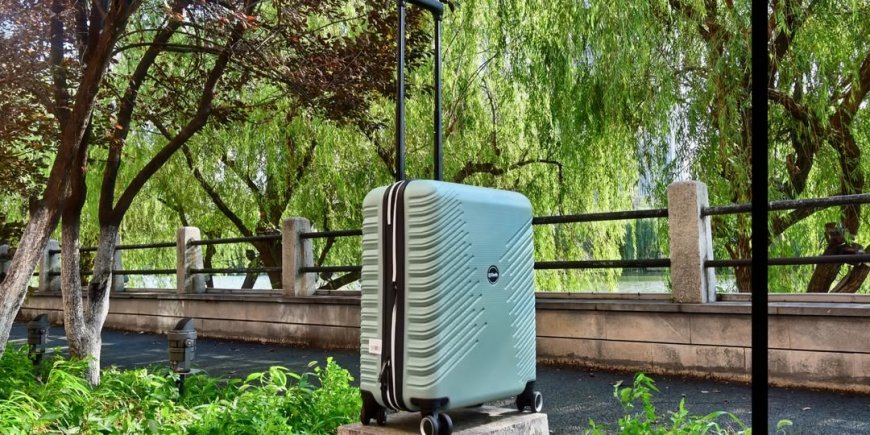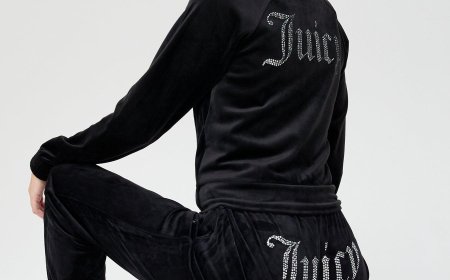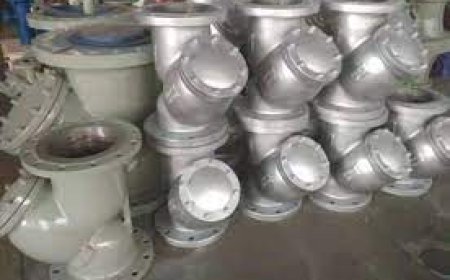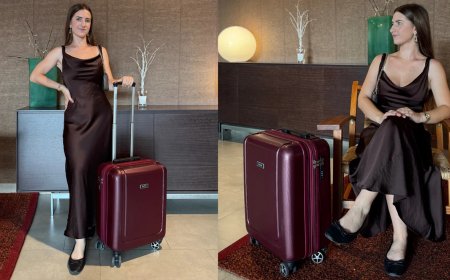Durability Tested: What Makes a Suitcase Truly Long-Lasting?
This in-depth article explores what truly defines a long-lasting suitcase in today’s travel landscape. It examines the key durability factors material quality, wheel and handle construction, zippers and stitching, interior design, and weather resistance. The article also discusses how warranty policies reflect product confidence and how savvy travelers can evaluate durability based on real-world use. Concluding with a recommendation of the Vigo Gen 2, it highlights a suitcase that combines rugged strength, smart design, and premium features ideal for long-term reliability. It’s a must-read guide for any traveler seeking to invest in luggage that performs trip after trip without compromise.
When selecting luggage, many travelers prioritize size, style, or storage capacity, but the most important feature is often durability. A suitcase that cannot withstand the demands of frequent travel is an investment that fails far too soon. The bumps of baggage handling, pressure in overstuffed compartments, and the constant motion of transit test every element of your suitcase. A durable suitcase not only protects your belongings from damage but also saves you from costly replacements or inconvenient breakdowns in the middle of a trip. Durability isn't about simply lasting longer it's about maintaining performance, protecting valuables, and offering reliability across multiple trips, destinations, and travel conditions. Whether youre traveling occasionally or constantly in motion, your suitcase must function like a dependable travel partner, built to handle more than just smooth airport floors.

What Materials Are Considered Strongest for Suitcase Construction?
The foundation of a long-lasting suitcase is its material. Not all materials are created equal, and knowing what your luggage is made of can offer insight into its potential lifespan. Polycarbonate is widely regarded as one of the best hard-shell materials for its strength, lightweight nature, and flexibility under impact. It resists cracks and dents better than other hard plastics. ABS, although more affordable, tends to be less durable and may show signs of wear more quickly. Aluminum suitcases are also highly durable but come at a higher cost and heavier weight, which may not suit all travelers. For soft-shell luggage, ballistic nylon is the top performer due to its resistance to tearing and abrasion. Polyester, on the other hand, is common in lower-end bags and usually lacks the resilience needed for extensive travel. The right material depends on your priorities whether you prefer weight savings, impact resistance, or a combination of both but in any case, strong materials are the first defense against damage.
How Do Wheels and Handles Affect the Longevity of a Suitcase?
One of the most overlooked components of a suitcase when it comes to durability is its wheels and handle system. However, these are the very parts most likely to experience stress and breakage. Spinner wheels, while convenient, must be made from quality rubber or polyurethane and securely fastened with reinforced housing to ensure they do not snap under pressure or wear down quickly. Roller wheels, especially those embedded into the frame, tend to offer better protection, particularly on uneven terrain. Similarly, the telescoping handle must lock securely and glide smoothly without rattling or bending. Stainless steel or aluminum handles are preferable for long-term use, while plastic mechanisms are more prone to damage over time. A strong suitcase integrates these moving parts seamlessly with the body, ensuring they can withstand the weight, pressure, and frequency of use that modern travel demands. Without durable wheels and handles, even the strongest shell can quickly become useless.
Why Is Stitching and Zipper Quality Often a Hidden Durability Factor?
While most buyers focus on the outer shell and wheel design, the quality of stitching and zippers plays a vital but less visible role in how long a suitcase lasts. In soft-shell luggage, reinforced stitching with double or triple thread not only strengthens seams but prevents them from splitting when the suitcase is overpacked or roughly handled. In hard-shell suitcases, internal stitching in linings, straps, and pocket sections still contributes to the overall integrity of the bag. Zippers, meanwhile, are one of the most used and most fragile components. High-quality zippers from trusted brands like YKK are known for their strength and fluid motion. A broken zipper can render an otherwise flawless suitcase useless, especially during international travel when repair options are limited. A long-lasting suitcase should have durable, smooth-operating zippers with protective flaps or anti-jam features, particularly in high-wear areas like the main compartment or expansion sections.
How Does Internal Design Contribute to a Suitcase's Lifespan?
Durability is not limited to the outer shell or wheels a suitcases internal design also influences its longevity. A well-structured interior with dedicated compartments, compression straps, and reinforced panels helps distribute weight evenly, preventing internal stress on seams and zippers. Removable or washable linings also reduce wear and allow the bag to stay clean and odor-free over time. Additionally, well-placed padding around tech compartments or delicate items helps protect electronics and valuables, reducing internal damage caused by shifting contents. If a suitcase lacks internal stability or allows items to slide around freely, it accelerates wear on both the interior and exterior. Long-term durability requires not only that the suitcase protect itself, but that it also safeguards its contents during transit. The design must make sense both from a structural and functional standpoint, offering smart space usage and stress management for whatever is packed inside.
What Role Does Weather Resistance Play in Suitcase Durability?
Exposure to various climates and environments is an unavoidable part of travel, making weather resistance a key aspect of suitcase durability. Whether its rain on the tarmac, snow during transport, or heat in the cargo hold, your suitcase needs to protect your belongings from the elements. Waterproof or water-resistant exteriors help prevent rain and puddles from seeping in and damaging clothes, documents, or electronics. Hard-shell suitcases generally offer better moisture resistance, while soft-shell models must include sealed zippers and treated fabrics to be effective. Heat resistance is another important feature, particularly for travelers visiting warmer regions where plastic parts can warp or adhesives may weaken. UV-resistant coatings can also prevent fading and material breakdown. A truly durable suitcase does not just survive being dropped or dragged it also shields its contents from the unpredictable challenges posed by nature.
How Do Manufacturer Warranties Reflect Luggage Durability?
Another useful indicator of a suitcase's durability is the manufacturer warranty. Brands that stand behind their products with multi-year or lifetime warranties are signaling confidence in the quality and longevity of their construction. These warranties typically cover defects in materials or workmanship but not damage from misuse. A solid warranty policy suggests rigorous testing during manufacturing and a commitment to customer satisfaction. Travelers should always read the fine print to understand what is and isn't covered. Luggage brands offering repairs or replacement services for broken handles, wheels, or zippers often provide higher-value products that are built to last. If a suitcase comes with only a limited short-term warranty or none at all, it might be a red flag regarding its expected lifespan. When purchasing a suitcase for long-term use, consider the warranty as a vote of confidence in the bags construction and durability.
How Do Travelers Know When a Suitcase Is Truly Built to Last?
With so many brands claiming to offer long-lasting products, it can be hard to distinguish marketing from real-world performance. Reviews from frequent travelers are often one of the most reliable sources of insight, particularly those who fly regularly or take multi-destination trips. Look for consistent praise in areas such as wheel performance, handle strength, zipper reliability, and resistance to wear. Physical testing results, such as drop tests or pressure simulations, also offer proof of durability claims. A suitcase that stands up to repeated use, heavy packing, and rough environments will consistently receive higher marks from experienced users. Travelers can also test their own bags by examining how well it holds shape when fully packed or how it performs on different surfaces. A suitcase that passes these practical tests while maintaining its functionality and appearance is likely built to last.
For travelers who refuse to compromise on durability, the Vigo Gen 2 represents a new standard in long-lasting suitcase design. Crafted from reinforced materials and engineered with precision, this model is made to endure the demands of frequent flyers and adventure-seekers alike. Its impact-resistant hard shell shields against rough handling, while its ultra-smooth spinner wheels glide effortlessly over varied surfaces. Inside, travelers will find a thoughtfully designed space with reinforced linings, secure straps, and compartments that protect both casual clothing and delicate valuables. Every element of the Vigo Gen 2, from its quiet wheels to its robust telescoping handle, has been tested to ensure it delivers consistent performance trip after trip. If you're searching for luggage that blends strength, smart design, and reliable protection, explore the Vigo Gen 2 and invest in a suitcase that wont let you down no matter where the journey takes you.



































